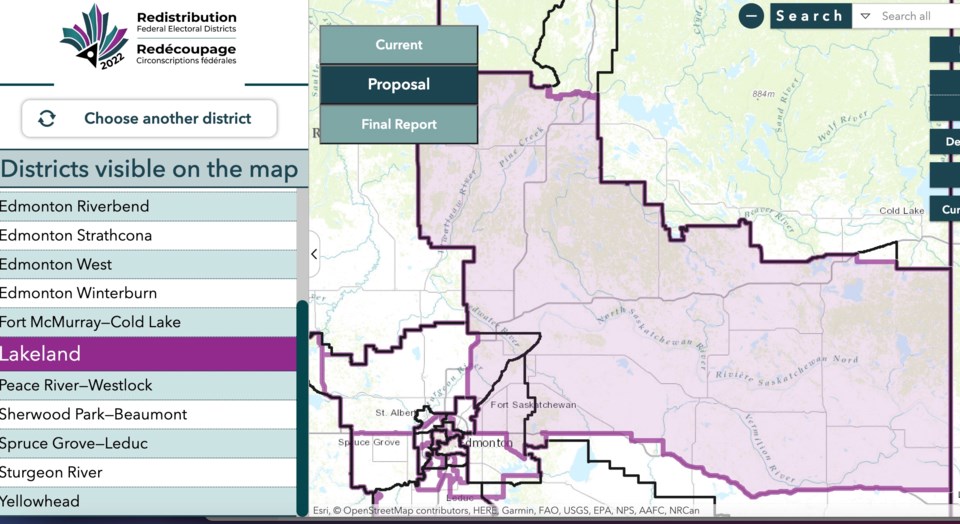LAKELAND - See you later, Lloydminster.
Hello Fort Saskatchewan, Redwater and Gibbons.
Those are the big changes in the Lakeland federal riding if proposed amendments are approved by Canada's MPs later this year.
The changes are part of significant amendments to the province's political map, resulting from an overall increase in Alberta's population by about 600,000 people since the last electoral district review a decade ago. The increase to approximately 4.26 million residents will also see the number of provincial ridings increase — from 34 currently to 37, if the amendments are approved following province-wide public consultation in August and September. The three new ridings will include one in the Calgary, taking the southern city to 11 electoral districts, one in the Airdrie-Chestermere area surrounding Calgary and the other in the Spruce Grove - Leduc area near Edmonton.
The proposed amendments were recently released by the three-member Federal Electoral Boundaries Commission for Alberta. The commission, made of an Alberta Queen's Bench Justice, a U of C political science professor and an Edmonton-based senior elections administrator, based the new jurisdictions on population growth, population shifts, existing trade routes and the geographic size of the ridings. The commission used an average population benchmark of about 115,000 people for each riding, and allowed a small over and underage.
The proposed new Lakeland riding will continue to see a general population base of about 115,800.
Lloydminster is proposed to become part of the Battle River-Crowfoot federal riding. The proposed Lakeland changes — bringing in Fort Saskatchewan — would change the name of the current Sherwood Park-Fort Saskatchewan riding to Sherwood-Park-Beaumont.
Low population
The current Fort McMurray-Cold Lake riding, which includes Lac La Biche, Conklin and Cold Lake did not see many changes to its existing boundary, but continues to be one of the province's federal ridings with the lowest population. The new riding configuration would see 110,800 residents in the Fort McMurray-Cold Lake riding, almost five percent below the benchmark, making it the second lowest riding population in the province, slightly above Canmore-Cochrane-Olds that would have 110,350.
The only changes proposed to the Fort McMurray-Cold Lake riding are the inclusion of the Lac La Biche River Wildland Provincial Park in the northeastern corner of Athabasca County, and a small piece of land west of Cold Lake First Nation and north of Highway 659.
The proposed boundaries will see the cities of Edmonton and Calgary hold 20 of the province's 37 new federal ridings, representing 54 per cent of Alberta's overall population base.
Public comment
The proposed changes will be part of an Alberta-wide consultation by the Commission that will run from Sept. 6 to 26. The Commission will be holding 24 in-person meetings, including one in St. Paul on Sept. 8 and one in Fort McMurray on Sept. 7. There is an in-person hearing slated for St. Albert on Sept. 13, but no in-person hearings are slated for Lac La Biche, Bonnyville or Cold Lake in the current schedule.
The Commission will be hosting a virtual hearing — and more if deemed necessary — on Oct. 14.
Waiting on MP comments
Current Lakeland MP Shannon Stubbs and newly-elected Fort McMurray Cold Lake MP Laila Goodridge were contacted by Lakeland Today late last week for comment on the proposed changes, but neither elected official had responded by the print deadline for this article.
Updates that include their comments will be posted online at www.lakelandtodayca when they become available.


